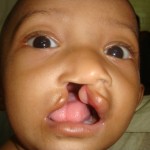
Craniofacial anomalies are a highly diverse group of complex congenital defects, which affect a small but significant proportion of populations. Oral clefts (cleft lip and palate) are the most frequent craniofacial anomalies. The aim of this study was to review the relationship of maternal and paternal age with the occurrence of non-syndromic oral clefts.
The authors searched Medline, Embase, LILACS, SciELO, SCOPUS and the Cochrane library databases for Cohort studies, case-control, cross-sectional and prevalence studies written in English where the association between parental age and oral clefts was investigated.
They identified 80 studies for quality assessment of which 13 were included in the meta-analysis.
They found:-
- No association between early paternal age (<20 years of age) and cleft lip and palate (CL/P ) and cleft palate (CP) was observed
- The odds of having a newborn with CP was 1.58 higher for fathers aged 40 years or over compared to those aged between 20 and 39 years
- There was no statistical association of early maternal age (<20 years) with CL/P, CP and CL.
- There was no relationship between maternal age ≥35 years and CL/P
- Mothers aged 40 years or over were 1.56 times more likely to have a newborn with CL/P compared to those aged between 20 and 29 years
- Mothers aged 40 years or over were 1.28 times more likely to have a newborn with CP compared to those aged between 20 and 29 years.
They noted that:-
Based on our findings, fathers and mothers aged forty-years or over are more prone to have offspring with a cleft lip with or without cleft palate
Herkrath AP, Herkrath FJ, Rebelo MA, Vettore MV. Parental age as a risk factor for non-syndromic oral clefts: A meta-analysis. J Dent. 2011 Oct 13. [Epub ahead of print] PubMed PMID: 22019990.
